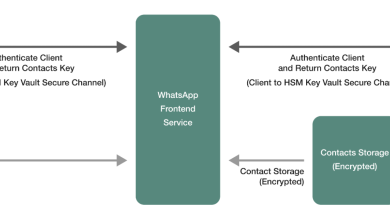What Is Personalized Marketing? [2024 Quick And Easy Guide]

What’s the biggest challenge facing brands and marketers today?
Learning more about their customers in a customer-centric market and using this learning to better communicate with them and serve their needs.
An Epsilon study shows that 80% of consumers are more likely to do business with a company when it offers them personalized experiences, and 90% find personalization appealing.
According to Epsilon Global EVP of Strategy and Analytics Kevin Mabley, “Digital transformation is no longer optional. It is required for brands to improve customer experiences and remain competitive. The research findings are further evidence that bringing together customer intelligence and customer experience to drive personalization has a direct impact on a brand’s bottom line.”
Personalization in marketing is key to business growth, and professional, industry-tested-and-proven, pre-vetted freelance marketers can help businesses achieve this..
Doing it right begins with understanding what personalized marketing is and how it can improve your business.
What is Personalized Marketing?
Personalization in marketing means using customer data to target and retarget leads with a message that speaks directly to specific customers’ interests, needs, demographics, and buying behavior.
With personalized marketing, your customers feel like your brand message was made just for them. This is why personalized marketing is also called one-on-one marketing or individual marketing.
When companies like Amazon, Netflix, and YouTube use an algorithm to automate suggested products, films, and videos for you to explore based on what you search for, purchase, and watch on their sites and the viewing habits of other users with tastes similar to yours, they are using personalized marketing.
Personalization isn’t just for digital channels.
When your favorite café, hotel, or salon makes you feel special, like they truly know you when they serve you with a uniquely personalized experience, they are using personalized marketing, too.
Personalization is the difference between your customers feeling like you are speaking directly to them as the unique human beings that they are versus your customers feeling like just a number and name in your marketing campaign contact list.
Current Personalized Marketing Trends
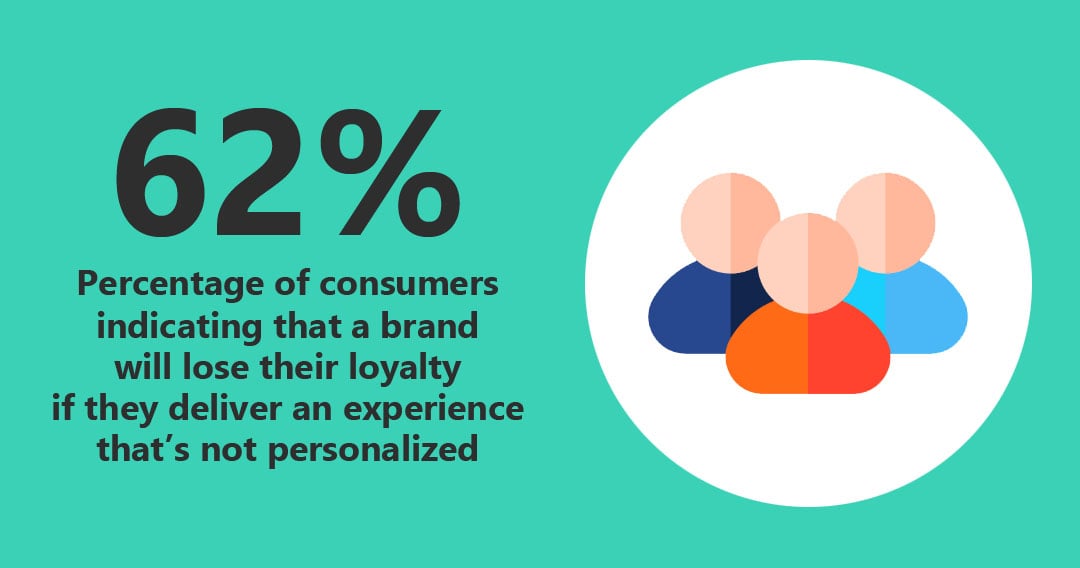
According to Twilio’s “The State of Personalization 2022” report, there are five (5) trends to monitor:
- Demand for personalization is increasing, with 62% of consumers indicating that a brand will lose their loyalty if they deliver an experience that’s not personalized. This is up nearly 20% from 2021.
- Omnichannel investments are improving but still have a long way to go. Only 35% of companies feel they are successfully achieving omnichannel personalization, up from 24% in 2021.
- Businesses are future-proofing their personalization efforts with first-party data.
- Businesses continue to seek a balance between personalization and consumer privacy.
- The bar for personalization is getting higher.
Benefits of Personalized Marketing
The average person sees around 1,700 advertisements each month. How do you cut through the noise and stand out? Not by being louder, but by being more relevant.
Integrating personalization into your overall marketing efforts lets you connect with leads in a more human and meaningful way at all stages of their buying journeys. This results in:
- Better relationships with them
- Higher customer engagement
- Improved brand reputation
- Increased brand loyalty
- Improved lead generation rates
- Increased repeat purchases
- Increase in sales/revenue
- Improved bottom lines
But, the main reason for personalizing your marketing is that customers expect it. If you deliver it well, it can spell the difference between whether your business grows and thrives, or not.
Personalized Marketing Types and Examples
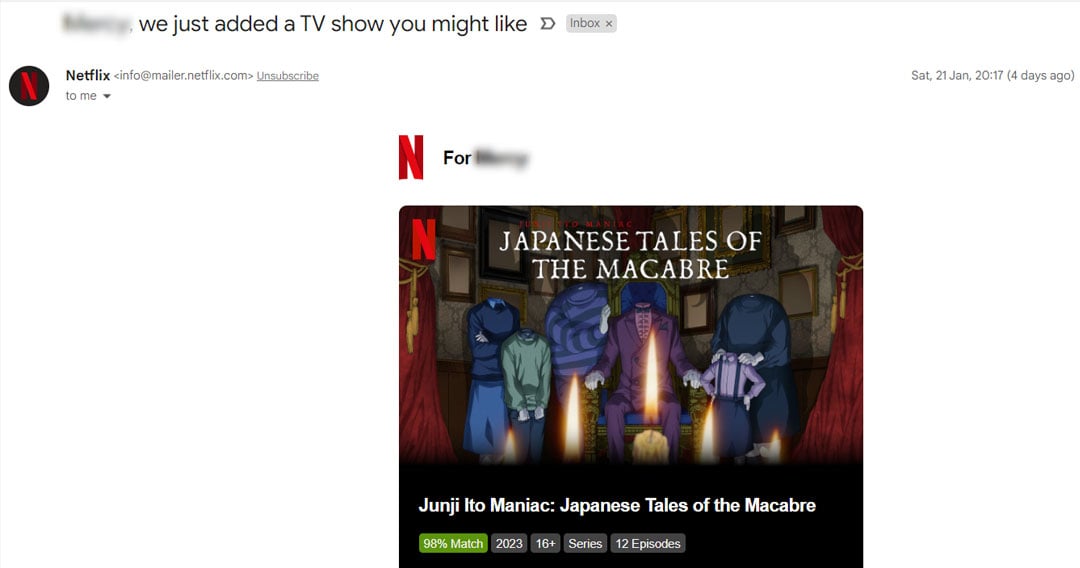
There are two (2) main types of personalized marketing: push-based and pull-based.
Push-based marketing involves the collection and analysis of customer data such as demographics, income levels, occupations, buying habits, and preferences to create individualized content for these customers.
Then, marketing automation is used to deliver this content to customers through blogs, email, social media, and other channels.
An example is how Spotify uses customer data such as music preferences and listening habits to create personalized emails to increase in-app engagement. For example, users are updated on their favorite artists’ new releases as well as upcoming concerts.
According to Experian, personalized emails have 29% higher open rates and 41% higher click-through rates than generic emails sent to everyone on the mailing list.
Pull-based marketing does not require brands to collect data on customers before they send them a message or create a promotion for them. Instead, brands create a gated, personalized offer for a target group.
The recipients of the offer then opt in by providing their basic information that the brands then use to verify their eligibility for the offer.
TED, the global conference platform, uses the opt-in form to allow their subscribers to select what kind of content they wish to see. TED’s system then delivers this content.
This meets what the subscribers want, and this also tells TED what kind of content its subscribers want to see more of.
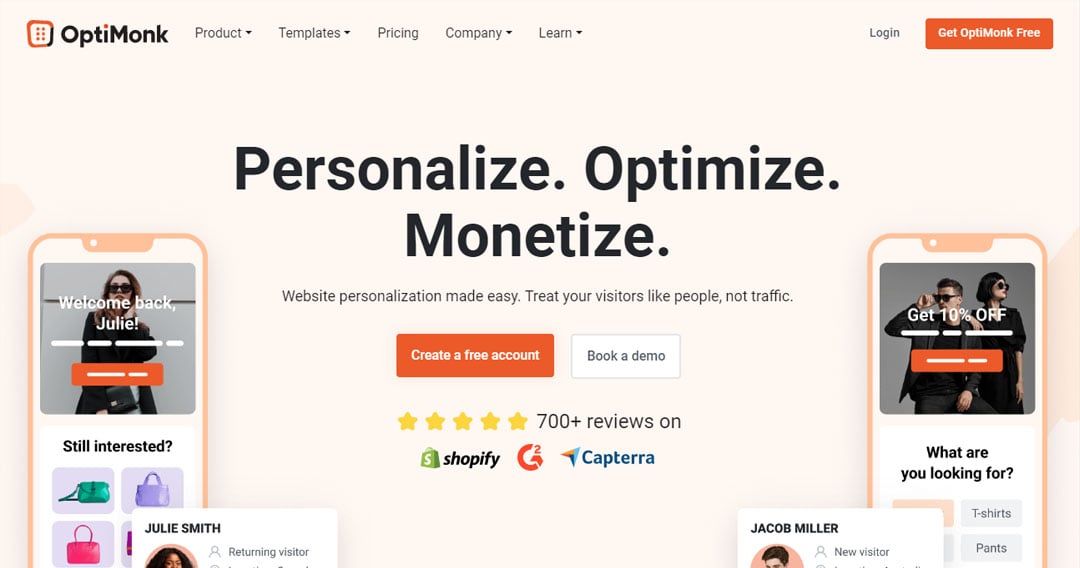
There are several marketing personalization software available to make personalization more efficient and effective. These tools help you create multiple experiences sent through different marketing channels to your specific customer segments.
Here are 6 best recommendations and their key features:
OptiMonk
OptiMonk is a comprehensive website personalization platform that lets brands and marketers easily create personalized shopping experiences. It has embedded content, overlays like pop-ups and side messages to get your visitors’ full attention, product recommendations, and smart tags for its key features.
HubSpot
HubSpot is a popular content management system (CMS) that also allows brands and marketers to personalize website content based on visitor characteristics and behavior. Its key features include smart content, personalization tokens, and pop-up forms.
Proof
Proof focuses on helping build trust through personalized social proof badges. Its key features include easy setup, live visitor count, and hot streaks.
Segment
Twilio Segment is a customer data platform that collects information on customer-specific events from your web and mobile apps.
Google Optimize
Google Optimize offers personalization and conversion optimization tools, including A/B testing, website testing, and dynamic content. It’s integrated with Google Analytics to help you analyze reports and gain in-depth insights on how to improve your site.
Netcore Cloud
Netcore is a distinguished personalization platform that empowers brands and marketers to tailor website content according to the attributes and behaviors of their visitors. Central to its offerings are dynamic content adjustments, personalization algorithms, and interactive widgets. These features collectively ensure that users are presented with content most relevant to their preferences, enhancing user engagement and conversion rates.
How To Get Started With Personalized Marketing
There are 5 steps to begin personalized marketing right:
1. Define your personalization strategy.
Begin with defining what your marketing objectives are based on your target segment’s stage in the customer journey:
Acquisition – landing page personalization?
Conversion – what to do with abandoned carts? How to tailor personalized retargeting campaigns?
Growth – recommend products, cross-sells, and upsells?
Retention – give out special offers on their birthdays and loyalty discounts?
Then think about the best channels for attaining the personalization you desire at each stage.
So far, the most effective channels for personalization are website personalization and email marketing. Start with these.
2. Plan how you will capture and use data.
You need to have good data to create effective personalization strategies. Decide how you will capture the data and make it available to your marketing team and technology stack in a timely manner.
There are a variety of data collection methods, but these are the often-used ones for starters:
- Cookie-based tracking of on-site behavior;
- Data captured from conversations and engagements with conversational AI chatbots and Customer Support;
- Email preference centers to understand how customers prefer to be contacted and what their interests are; and
- Quizzes on your site to understand what they are engaged with.
Ensure transparency with your site users by disclosing that you collect and monitor user data and offer them a chance to opt out or give their information at will.
This helps build trust between your brand and your consumers. Letting them create profiles and accounts is another way to do this.
3. Decide on your technology stack.
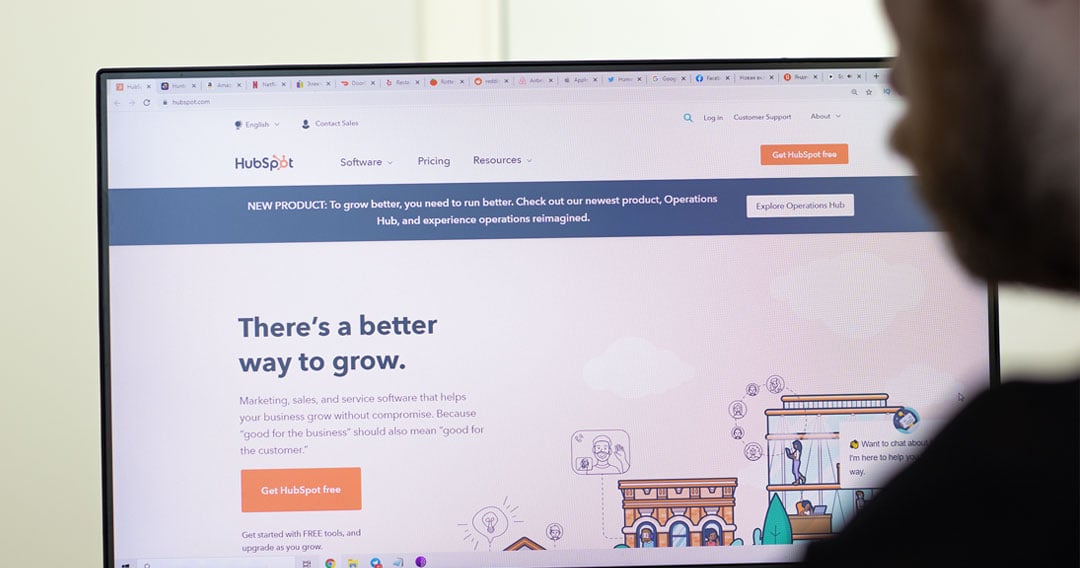
It is very likely that you will be using a Customer Relationship Management (CRM) software for all the customer data you collect from your lead capture forms, sales calls, and third-party data providers.
CRMs automatically update prospect information, and this allows your marketing and technology teams to access accurate their data in real-time.
There are also specialists that can help you deliver personalized content across different channels, such as basket abandonment specialists, display personalization specialists, email personalization specialists, and paid search specialists.
4. Develop and activate your personalization campaigns.
Depending on your technology decision, you’ll have to make further decisions on the visuals, the messaging specifics, and the frequency and timing of your campaigns.
A pre-vetted, professional, and experienced marketer can also help you with this.
Then, once you’ve made the necessary decisions, activate your personalization campaigns.
5. Test and refine your personalization campaigns.
Once your campaign is live, monitor all aspects of your campaign to make sure that it’s on track as you also learn from it and finetune it along the way.
Employ A/B testing to compare how various audiences respond to your different messages across different channels.
Personalized Marketing Tips and Strategies

A key tip for effective personalized marketing is to be clear about your ideal customer persona and to use segmentation based on shared group characteristics of your prospects and customers.
You need to know who you are communicating with at all stages of the customer journey before you can personalize your communications according to their characteristics.
To market effectively, you need to understand your customers well.
Plan your content library based on the entire marketing funnel. Though the majority of marketing content revolves around new customer acquisitions, nurture existing customers to encourage repeat business and increase upselling opportunities.
Acquiring a new customer can cost you 5 times more than it does to retain an existing one.
Create highly personalized content and offers based on the customer data you collect. Using loyalty programs, special offers, and personalized coupons help build trust and loyalty among your customers.
Create targeted landing pages on your site. Customize the messaging on each page using language and content that best suits the targeted audience.
They can learn more about your brand and you can entice them with special offers in exchange for more information about them.
Most importantly, humanize your interactions. Add a personal, warm touch when interacting with your customers across all channels.
This means more than just using their first names in the emails you send out. Create and nurture a warmer and friendlier experience for them. For instance, you can do this by adding the name and picture of the person emailing them.
If your resources allow, employ a dedicated customer service representative equipped with the right contact center software to attend to them.
Add transparency and empathy to all your communications with them so that you feel more like a friend to them than a cool, detached stranger.
The Future of Personalized Marketing
The future of marketing is hyper-personalization, with lots of visuals and music, moving marketers “from mathematicians to anthropologists”, constantly studying their customers and their needs.
They will need to map out and appeal to the different aspects of people’s identities.
With personalization, you can create hyper-relevant content that attracts different target groups. For example, a Super Bowl ad can become 50 different pieces of content, with the soundtrack replaced by many songs in different genres that appeal to a range of different target groups.
Content-as-a-Service (CaaS) platforms will flourish. They make it easy to manage and repurpose content creation and can play a key role in personalized marketing.
You can build content readily formatted for different channels, helping you provide high-quality omnichannel experiences to your different target customer segments.
According to Shopify Plus, there are 7 significant personalized marketing trends occurring now and expected to grow in 2024 and beyond:
1. Artificial Intelligence (AI)-driven personalization
More retail brands are increasing their efforts to use AI and machine learning for personalization. A key use is providing personalized product recommendations based on previous user data.
2. Privacy-conscious personalization
A cookie-less reality is upon us. The Apple, Brave, and Firefox browsers already block third-party cookies. Google Chrome, which captures 60% of the search engine market, announced in July 2021 that it would delay third-party blocking until late 2023. Privacy-conscious even explore private web search engines as an alternative to their default browsers.
While consumers demand personalization, it should not be at the expense of their privacy and personal data security. So, brands are looking to zero- and first-party data to fill the gap third-party cookies will leave behind.
Zero-party data, a term coined by Forrester Research, are information that a customer intentionally and proactively shares with a brand, such as preference center data, personal context, purchase intentions, and how the individual wants to be recognized by brands.
An example is data collected from free account creation, customer quizzes, surveys, and polls.
First-party data is behavioral (link to “Everything You Need To Know About Behavioral Targeting” article) data which covers an individual’s app-wide, site-wide, and on-page behaviors such as clicking, hovering, scrolling, active time spent, session context, and how this individual engages with personalized experiences.
Transactional data like downloads and purchases are also first-party data. Examples of first-party data collection methods are newsletter signups, loyalty programs, product onboarding, and members’ communities.
3. Personalized rewards
Personalization is as important in the post-purchase phase as it is in the pre-purchase phase of the customer journey.
Retailers can delight their customers with personalized deals and rewards based on their recent purchase history.
Rewards tailored to individual customers show your brand cares and encourage repeat purchase and loyalty program signups.
More than half (55%) of global consumers say that personalized rewards make them join loyalty programs.
4. More personalized mobile experiences

In 2023, it is estimated that 8% of all retail transactions will happen through a mobile device. By 2025, this is forecasted to exceed 10%.
As more people shop online using their mobile phones, they will also expect convenience, instant access to information, the ability to discover new products, and relevant mobile shopping experiences.
Brands that sell through mobile apps can use customer data and behavior analytics to send mobile push notifications to announce product launches, limited-time sales, and promotions.
These should be designed to provide users with relevant offers and get them to spend more time shopping through the app.
Brands can also use mobile app notifications to personalize the shopping experience, making it more convenient for customers, by sending instant messages when they ship ordered items, or offering unique discount codes and exclusive content for loyalty programs.
5. Building brand communities
Brands are turning to community building among their customers to further improve relationships, grow trust, and strengthen loyalty.
Community building can be a cost-effective way of getting to know customers on a deeper level, too.
Communities particularly work well for brands with niche products or items that are new to the market, and people have a lot of questions and need to do more research around the product line.
6. Curated subscriptions
Instead of classic subscription models which offered customers the same recurring purchase on a strict calendar-based schedule, direct-to-consumer (DTC) brands are now personalizing subscription bundles to increase customer value and reduce burnout and churn.
Personalized subscriptions give customers the power to make custom choices.
7. Facial recognition technology
Brands with physical locations are increasingly using facial recognition technology to personalize the in-store customer experience.
In 2021, it was valued at $4.35 billion. It is now forecasted to grow to $11.53 billion by 2030 at a compound annual growth rate (CAGR) of 12.62%.
Facial recognition technology can monitor foot traffic, assess average shopping time, and analyze customer behaviors.
Brands can use this technology to also get accurate demographic information and improve product placements.
Popular use cases include virtual try-ons, self-service shopping, and sales notices to advise store sales staff in offering individual customers personalized product recommendations.
FAQs
- How effective is personalized marketing?
Very effective. According to Statista, 63% of marketers have observed that personalization increases customer interactions and, ultimately, conversion rates. Personalization across multiple touchpoints increased ROI by 300% or more.
- What is the difference between personalization and customization?
Personalization is when a brand creates or modifies an item to meet an individual’s needs. Customization is when a customer manually makes changes to the item to meet their need, requirement, or preference. An aspect of personalized marketing can be providing add-ons to a product that their users can customize for themselves.
- Do consumers prefer personalization?
Yes. According to Forbes, based on findings from a Salesforce study, today’s consumers want personalized, seamless, and omnichannel experiences.
- Why is personalization a growing trend?
The ecommerce and digital marketing landscape have become very noisy and hyper-competitive. Technology has made a lot of things easy and accessible. People expect brands to understand their unique needs and expectations.
The only way for brands to stand out is to stay relevant to their continually-evolving market, and to stay relevant means to keep knowing customers at any and every stage of their customer journey through personalization.
The Heart of Personalized Marketing
Everyone wants to feel important, like they are the only person in the world that matters.
In an increasingly hyper-connected technological world with the inundation of vast information from many sides, the very human need to feel seen and known—for who one is—is amplified.
In the face of cold technology and hard facts, the need for heart-based attention and communication is magnified.
Personalized marketing, when done right and well, can help fill these needs.



